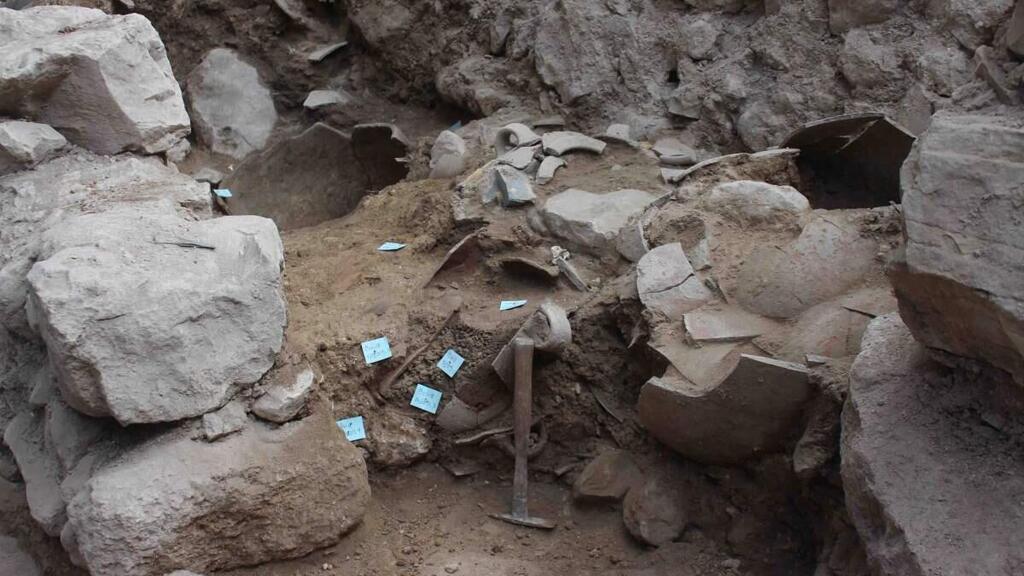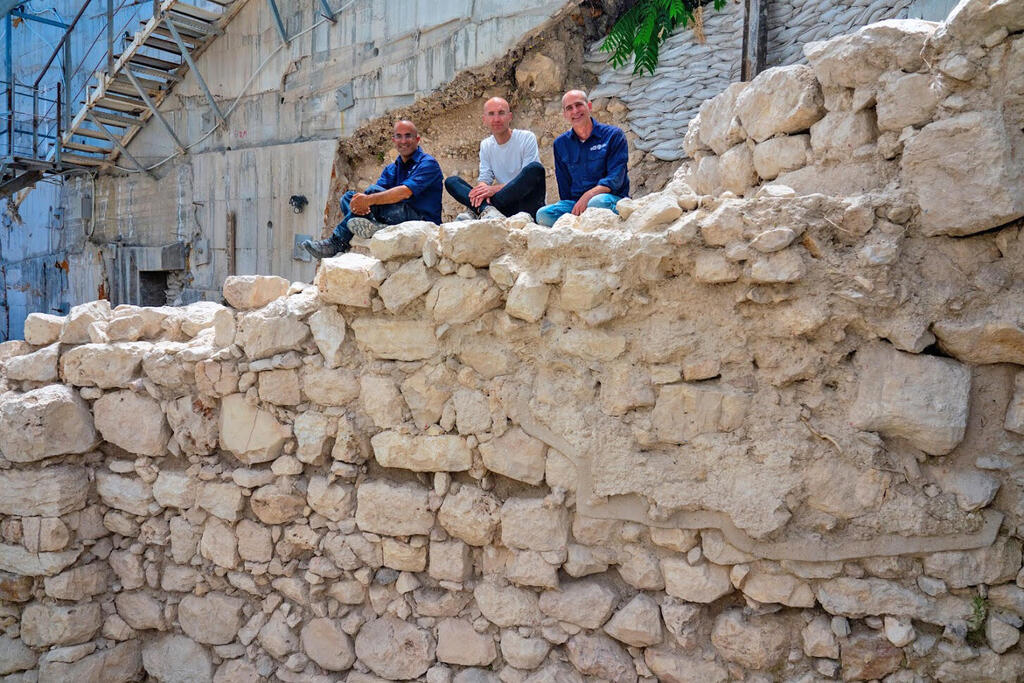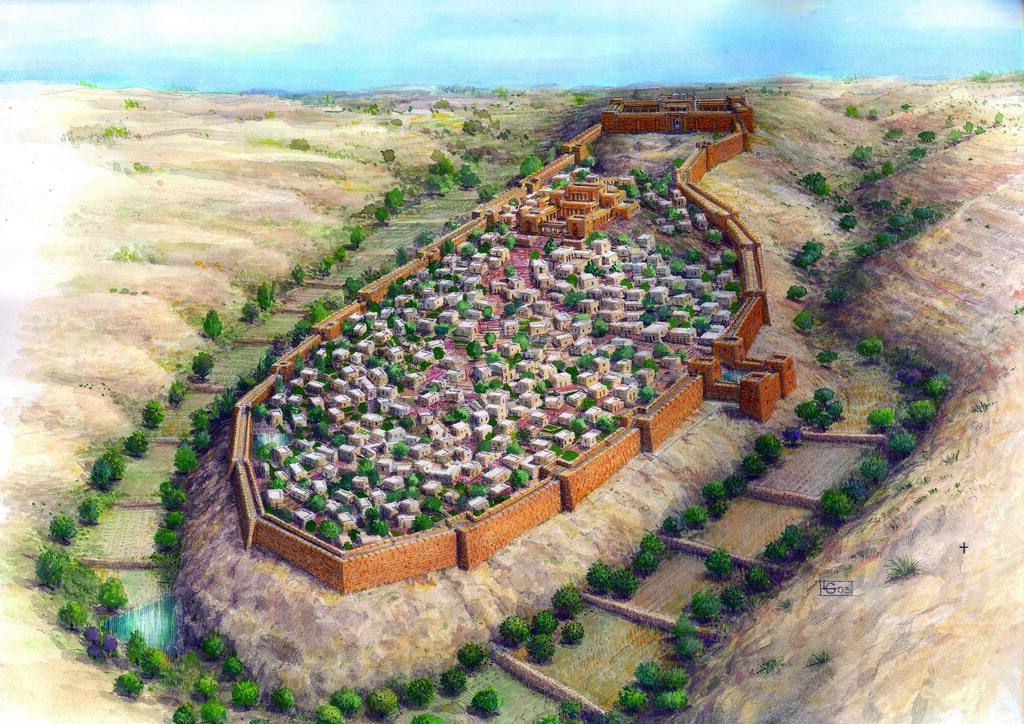Researchers have meticulously linked events depicted in the Bible to archaeological findings in the City of David in Jerusalem. The study involved researchers from the Israel Antiquities Authority, Tel Aviv University and the Weizmann Institute of Science, with support from the National Science Foundation.
Contrary to the longstanding assumption that the eastern wall of Jerusalem was built by King Hezekiah of Judah, findings suggest it was constructed during an earlier period, under the reign of King Uzziah. Published in the Proceedings of the National Academy of Sciences of the United States of America (PNAS) journal, this research challenges previous perceptions of Jerusalem's construction projects during the reigns of Judean kings.
4 View gallery


Dr. Eugenia Mintz, Dr. Johanna Regev, Prof. Elisabetta Boaretto and Lior Regev
(Photo: Weizmann Institute of Science)
In this new study, researchers meticulously described the structures and walls built in Jerusalem during the First Temple period, identifying areas where extensive activity occurred during the reigns of Judean kings. This provided an opportunity to link the biblical descriptions of royal construction projects in Jerusalem with the actual construction activities uncovered in archaeological excavations over the past few decades in the City of David.
The research presents over a hundred radiocarbon dates, derived from four different excavation sites across the City of David, spanning its eastern and western slopes. These dates were determined through the analysis of organic artifacts such as grape seeds, date pits, and even bat skeletons found within one of the structures.
After undergoing meticulous characterization and cleaning processes in labs, these samples were inserted into a particle accelerator, which separated the carbon-14 from the organic material at a speed of 3,000 kilometers per second. Measurement of the carbon content in the organic material, combined with other variables, allowed researchers to accurately date numerous findings in the city of David.
This new research sheds light on a long-debated question regarding the nature and extent of Jerusalem during the reigns of David, Solomon, and thereafter. The findings from this study indicate a substantial settlement existed in Jerusalem during this period.
4 View gallery


Excavation site in the City of David showing signs of the earthquake that occurred in 750 BCE
(Photo: Weizmann Institute of Science)
As part of this current research, scientists from the Weizmann Institute of Science utilized ancient tree rings from Europe to create a precise timeline of single-year dates. This enabled a more accurate understanding of fluctuations in atmospheric carbon-14 levels over time. This additional tool greatly enhanced dating accuracy for periods where carbon-14 dating alone might be insufficient, allowing for the scientific reconstruction of Jerusalem's history from around 1200 BCE – prior to the reigns of David and Solomon according to biblical accounts – up to the Babylonian destruction in 586 BCE.
"Sampling organic materials from archaeological sites alone isn't enough; context is key," explained Professor Elisabetta Boaretto, head of the scientific archaeology unit at the Weizmann Institute of Science.
"We need to understand how the archaeological site was formed so that when we sample in the field, we can be confident that the materials we collected were there when the site was built and can be used to accurately date the site itself. For example, when we found a large quantity of charred seeds, we first needed to understand exactly where they were burned. We accomplish this using methods we developed over the years, employing advanced laboratory equipment that we also bring to the field," added Boaretto, who sampled findings from various areas in the City of David alongside Dr. Johanna Regev.
Professor Yuval Gadot from Tel Aviv University's archaeology department said the new research allows researchers to learn about the development of the city. "Until now, most researchers linked the rise of Jerusalem to the west, during the time of King Hezekiah – just over 2,700 years ago. The prevailing assumption was that the city expanded due to the influx of refugees from the northern kingdom of Israel after the Assyrian exile. However, the new findings strengthen the view that Jerusalem grew in size and spread toward Mount Zion already in the 9th century BCE, during the reign of King Jehoash, 100 years before the Assyrian exile. In light of this, the new research indicates that Jerusalem's expansion resulted from internal Jewish demographic growth and the establishment of political and economic systems," Gadot explained.
Additionally, the new research reveals that the Jerusalem wall discovered in several excavation sites on the eastern slopes of the City of David is even older than previously thought.
"For decades, it was assumed that this wall was built by King Hezekiah of Judah during his rebellion against King Sennacherib of Assyria, to protect Jerusalem during the Assyrian siege. However, it is now evident that the eastern portion of the wall, in the City of David area, was built earlier, shortly after the great earthquake of Jerusalem, as part of the building renewal on the hilltop during the reign of King Uzziah. After the wall was constructed and until the Babylonian destruction, the city continued to grow and prosper," according to Dr. Joe Uziel from the Israeli Antiquities Authority.
The new research also reveals the construction of palaces and residences for the first time in the 8th-9th centuries BCE, which were in use continuously until 586 BCE, when the city suffered devastating destruction that marked the end of the Kingdom of Judah. The breakthrough that allowed the use of carbon-14 for dating the layers of destruction from 586 BCE and earlier floors is related to the use of ancient tree rings that helped accurately date these periods for the first time, which were previously considered a "dark age" in carbon-14 dating.
(צילום: יניב ברמן ואסף פרי, עיר דוד)






